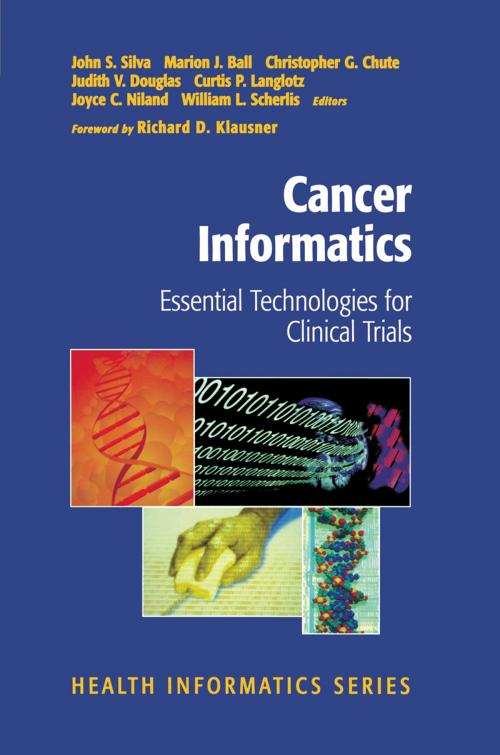Cancer Informatics
Essential Technologies for Clinical Trials
Nonfiction, Health & Well Being, Medical, Reference, Instruments & Supplies, Specialties, Oncology| Author: | ISBN: | 9781461300632 | |
| Publisher: | Springer New York | Publication: | December 6, 2012 |
| Imprint: | Springer | Language: | English |
| Author: | |
| ISBN: | 9781461300632 |
| Publisher: | Springer New York |
| Publication: | December 6, 2012 |
| Imprint: | Springer |
| Language: | English |
Cancer Informatics chronicles the development of the National Cancer Institute's new Cancer Informatics Infrastructure (CII) - an information management system infrastructure designed to faciliate clinical trials, provide for reliable, secure information exchange, and improve patient care. The book details the challenges involved in creating and managing such a knowledge base, including technologies, standards, and current, state-of-the-art applications.
The ultimate goal of CII is to function as an enabler of clinical trials, expediting the clinical trials lifecycle, faciliating faster and safer drug development and more appropriate treatment choices for cancer patients. Contributors address the role the CII must play in converting the growing knowledge of genes, proteins, and pathways into appropriate preventative, diagnostic, and therapeutic measures. Presented in four sections, the first provides an overview of the processes involved in moving the infrastructure for cancer from theory into practice. Sections two through four offer the latest work done in the areas of technology, cancer-specific and national standards, and applications to faciliate clinical trials.
Cancer Informatics chronicles the development of the National Cancer Institute's new Cancer Informatics Infrastructure (CII) - an information management system infrastructure designed to faciliate clinical trials, provide for reliable, secure information exchange, and improve patient care. The book details the challenges involved in creating and managing such a knowledge base, including technologies, standards, and current, state-of-the-art applications.
The ultimate goal of CII is to function as an enabler of clinical trials, expediting the clinical trials lifecycle, faciliating faster and safer drug development and more appropriate treatment choices for cancer patients. Contributors address the role the CII must play in converting the growing knowledge of genes, proteins, and pathways into appropriate preventative, diagnostic, and therapeutic measures. Presented in four sections, the first provides an overview of the processes involved in moving the infrastructure for cancer from theory into practice. Sections two through four offer the latest work done in the areas of technology, cancer-specific and national standards, and applications to faciliate clinical trials.















